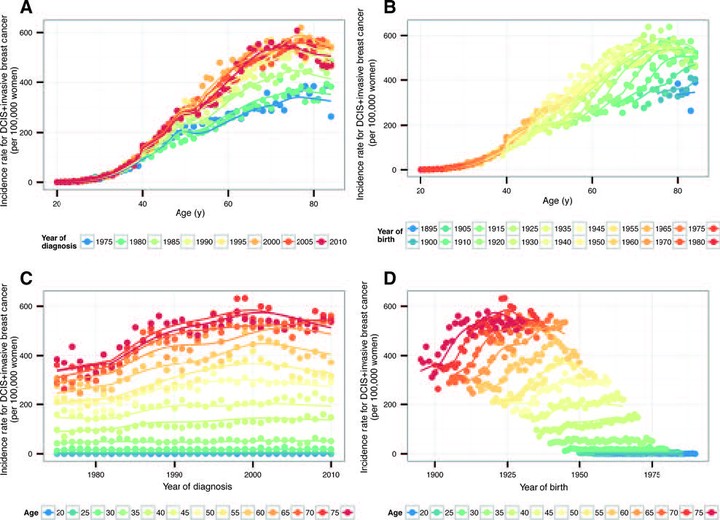The contribution of mammography screening to breast cancer incidence trends in the United States: an updated age-period-cohort model

Abstract
BACKGROUND: The impact of screening mammography on breast cancer incidence is difficult to disentangle from cohort- and age-related effects on incidence. METHODS: We developed an age-period-cohort model of ductal carcinoma in situ (DCIS) and invasive breast cancer incidence in U.S. females using cancer registry data. Five functions were included in the model to estimate stage-specific effects for age, premenopausal birth cohorts, postmenopausal birth cohorts, period (for all years of diagnosis), and a mammography period effect limited to women ages ≥ 40 years after 1982. Incidence with and without the mammography period effect was calculated. RESULTS: More recent birth cohorts have elevated underlying risk compared with earlier cohorts for both pre- and postmenopausal women. Comparing models with and without the mammography period effect showed that overall breast cancer incidence would have been 23.1% lower in the absence of mammography in 2010 (95% confidence intervals, 18.8-27.4), including 14.7% (9.5-19.3) lower for invasive breast cancer and 54.5% (47.4-59.6) lower for DCIS. Incidence of distant-staged breast cancer in 2010 would have been 29.0% (13.1-48.1) greater in the absence of mammography screening. CONCLUSIONS: Mammography contributes to markedly elevated rates of DCIS and early-stage invasive cancers, but also contributes to substantial reductions in the incidence of metastatic breast cancer. IMPACT: Mammography is an important tool for reducing the burden of breast cancer, but future work is needed to identify risk factors accounting for increasing underlying incidence and to distinguish between indolent and potentially lethal early-stage breast cancers that are detected via mammography.